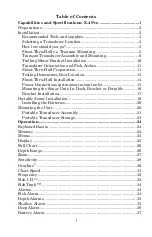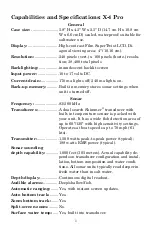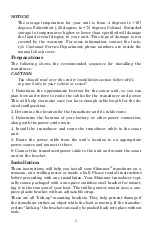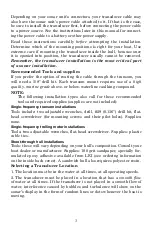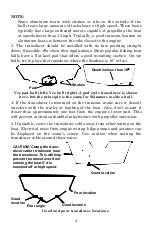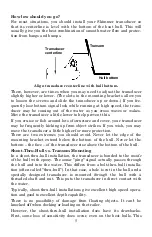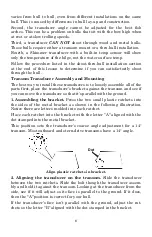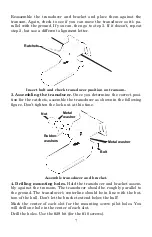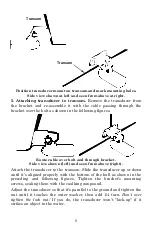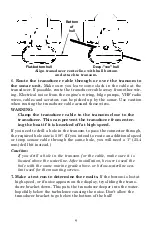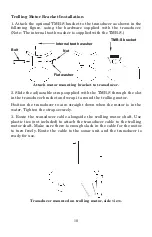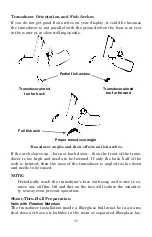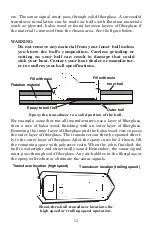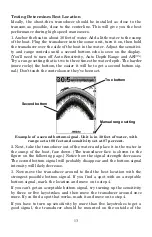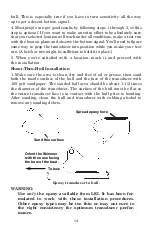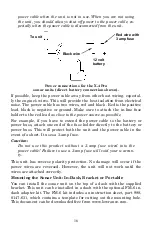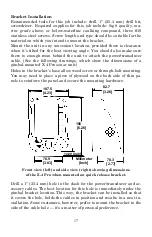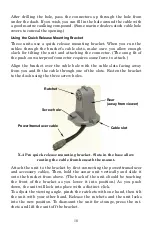
3
Depending on your sonar unit's connectors, your transducer cable may
also have the sonar unit's power cable attached to it. If that is the case,
be sure to install the transducer first, before connecting the power cable
to a power source. See the instructions later in this manual for connect-
ing the power cable to a battery or other power supply.
Read these instructions carefully
before
attempting the installation.
Determine which of the mounting positions is right for your boat. Use
extreme care if mounting the transducer inside the hull, because once
it is epoxied into position, the transducer usually cannot be removed.
Remember, the transducer installation is the most critical part
of a sonar installation.
Recommended Tools and supplies
If you prefer the option of routing the cable through the transom, you
will need a 5/8" drill bit. Each transom mount requires use of a
high
quality
,
marine grade
above- or below-waterline caulking compound.
NOTE:
The following installation types also call for these recommended
tools and required supplies (supplies are
not
included):
Single-frequency transom installations
Tools include: two adjustable wrenches, drill, #29 (0.136") drill bit, flat-
head screwdriver (for mounting screws and their pilot holes). Supplies:
none.
Single-frequency trolling motor installations
Tools: two adjustable wrenches, flat-head screwdriver. Supplies: plastic
cable ties.
Shoot-through hull installations
Tools: these will vary depending on your hull's composition. Consult your
boat dealer or manufacturer. Supplies: 100 grit sandpaper, specially for-
mulated epoxy adhesive available from LEI (see ordering information
on the inside back cover). A sandwich hull also requires polyester resin.
Selecting a Transducer Location
1. The location must be in the water at all times, at all operating speeds.
2. The transducer must be placed in a location that has a
smooth flow
of water at all times. If the transducer is not placed in a smooth flow of
water, interference caused by bubbles and turbulence will show on the
sonar's display in the form of random lines or dots whenever the boat is
moving.



